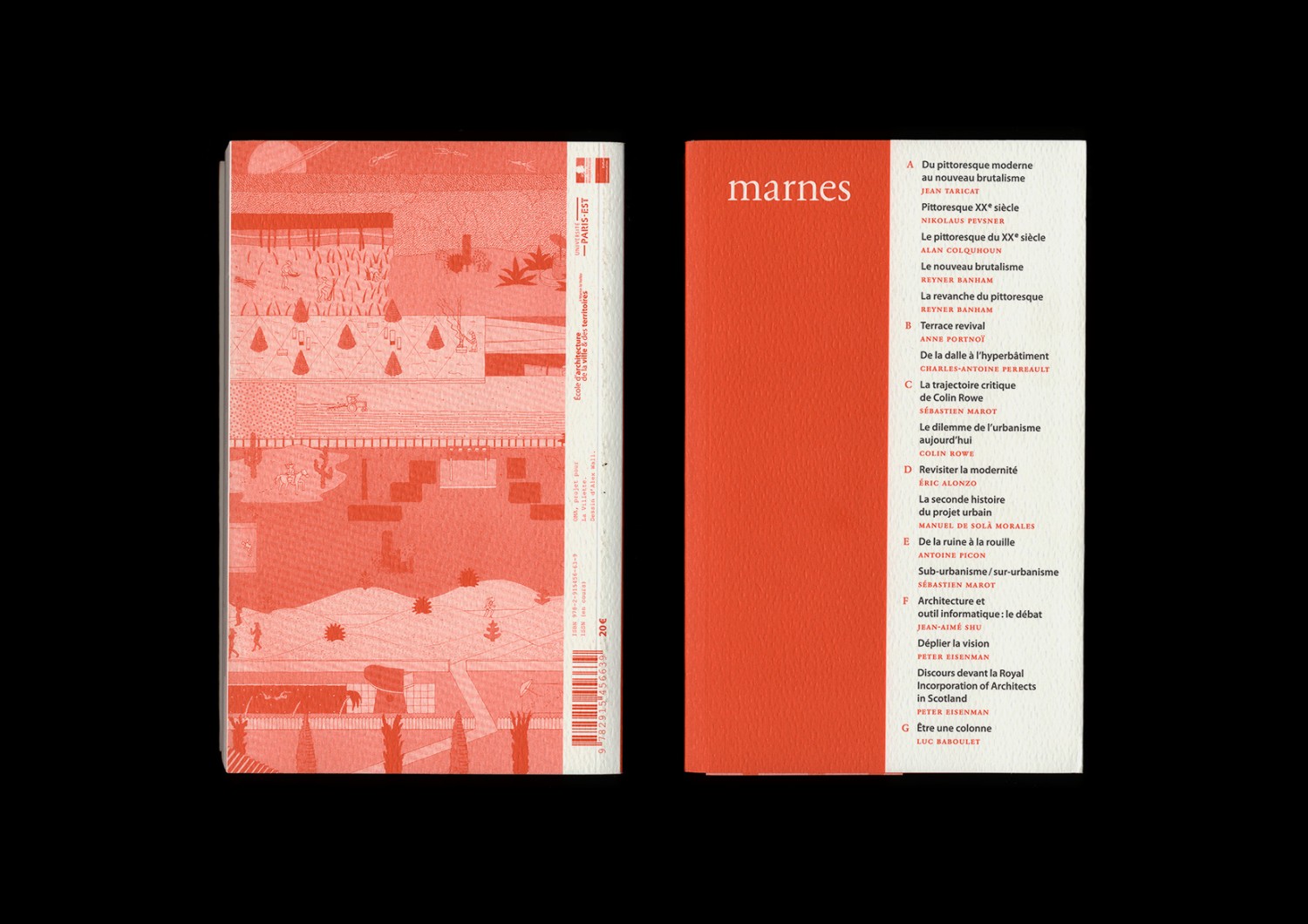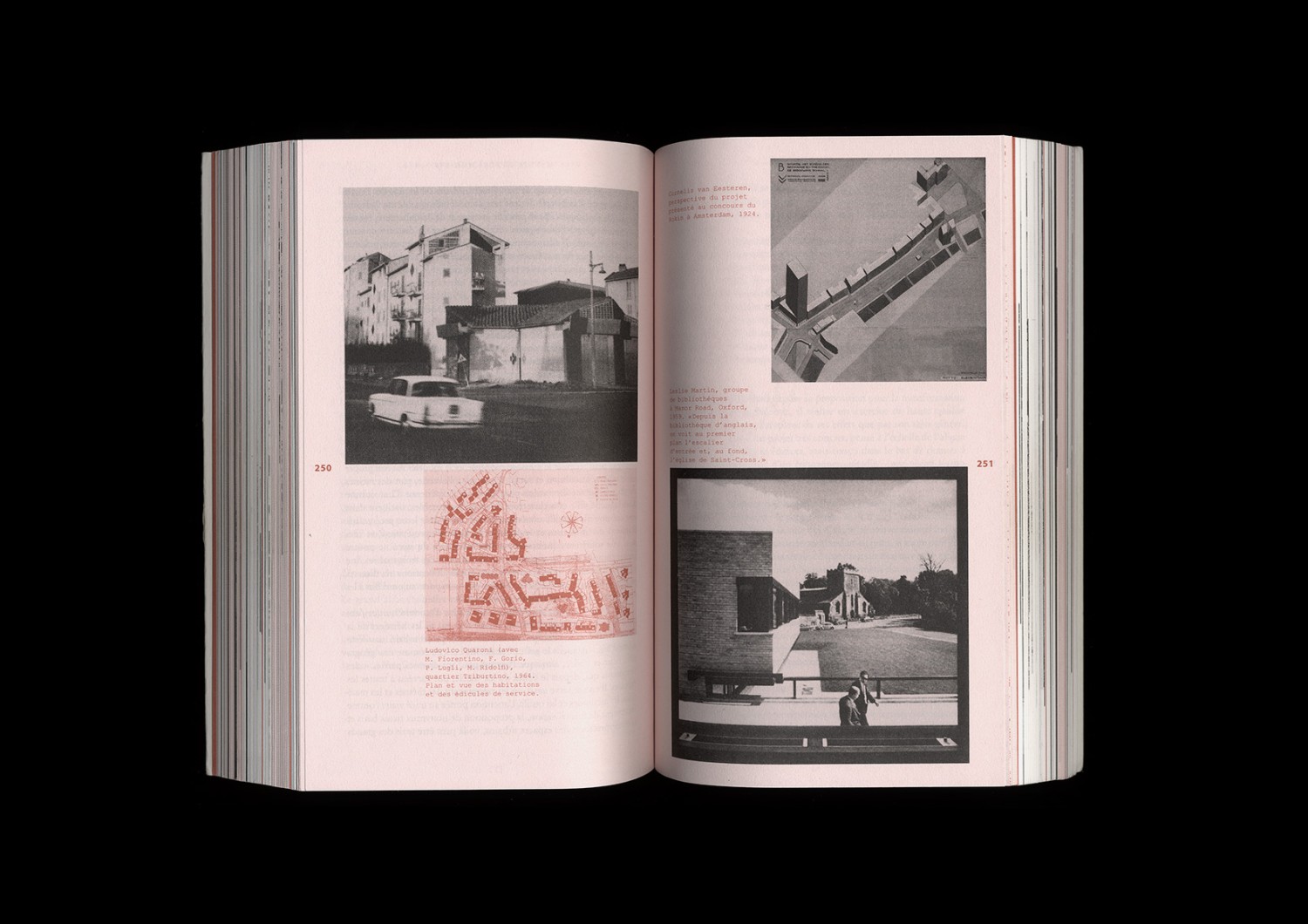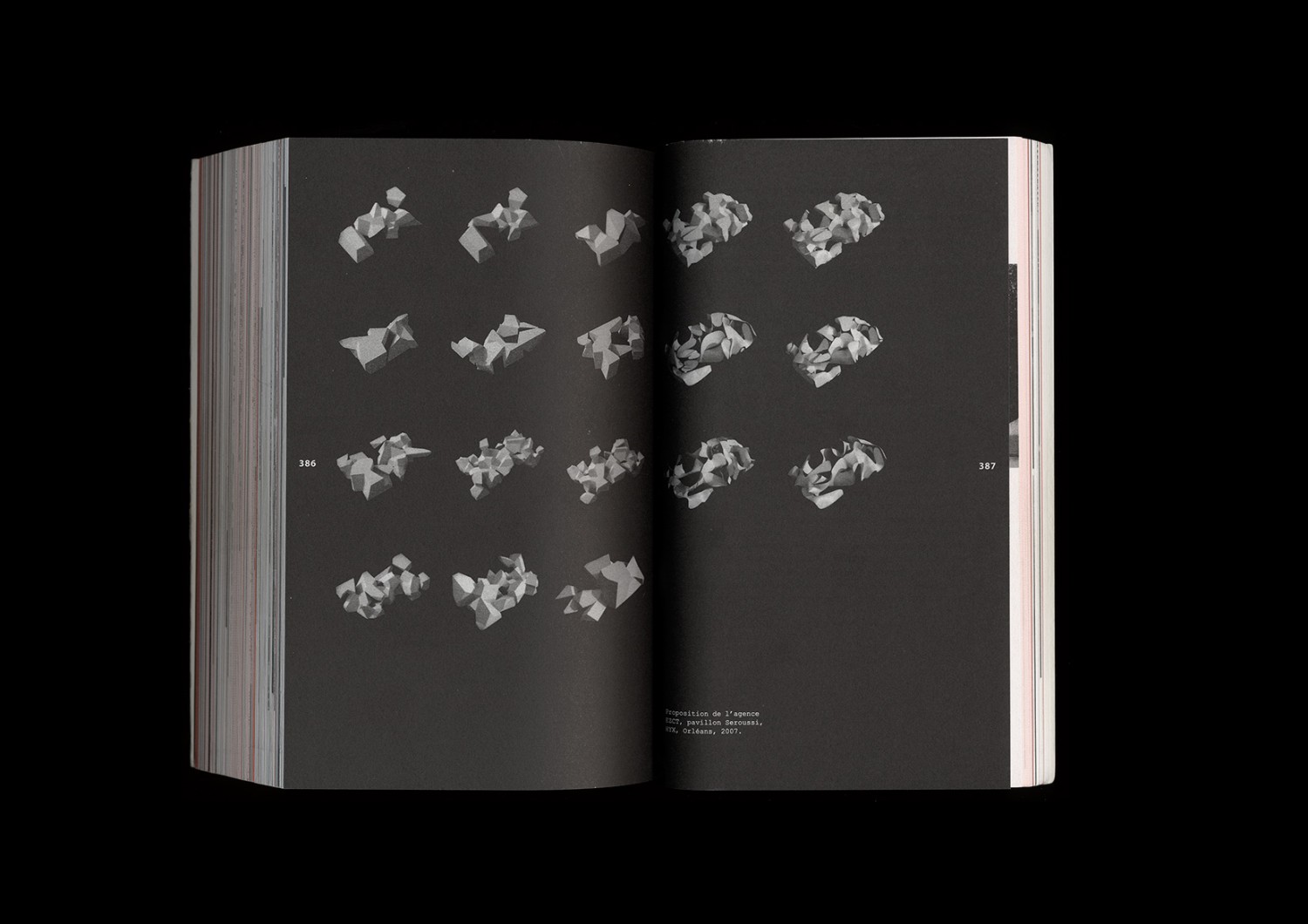Marnes, documents d'architecture, vol. 1
Editorial: Sébastien Marot
Materials
The primary aim of this issue is to make available and present, by translating them where necessary, documents, texts, projects or essays that we consider to be useful references or stimulating contributions to reflection on architecture and its pedagogy today. Our readers will thus find in this issue several texts that have played an important role in the Anglo-Saxon debates of recent decades, and which until now have not been accessible in French.
This is the case, for example, of the articles by Nikolaus Pevsner and Reyner Banham that Jean Taricat has translated and presented here to document the curious quarrel that animated the English scene in the 1960s around a possible picturesque tradition in modern architecture. The idea of linking the modern movement to this tradition will no doubt seem strange to French readers, who are more accustomed to seeing it as an explicit offshoot of Cartesian rationalism. And yet, it cannot be denied that the displacement effected by this alternative genealogy has been fertile both theoretically and practically. We owe to it not only the critical notion of brutalism, coined by Banham in 1960, but also much of the philosophy of the "as found" that Alison and Peter Smithson later developed, and which still inspires, underhandedly, a significant segment of contemporary production. We thought it would be useful to add these pieces to the French debate, to complete its instruction, and to show that the topicality, development and continuation of an idea largely depend on our ability to propose new histories... or new geographies.
This same ambition to equip our readers with influential and intelligible theoretical references has also led us to present here two texts that mark out the philosophy of the "urban project" as it emerged during the 1970s and 1980s. The first is a lecture that Colin Rowe gave on numerous occasions to accompany the publication of his book Collage City, written with Fred Koetter and published in 1978. "Le dilemme de l'urbanisme aujourd'hui" (The Dilemma of Urbanism Today) has the dual advantage of providing a kind of summary of the central theses of this important book (for those who haven't read it), and of being illustrated by other examples and references (for those who would like to read on). It thus provides an excellent introduction to the ambivalent work of this theorist of urban design and contextualism, in whom Banham saw "the authentic founder of post-modern thought" in architecture, and whose critical trajectory we have seen fit to retrace here. The other text, written ten years later, is by a Barcelona architect who was one of the champions of this applied philosophy. In "La seconde histoire du projet urbain" (The second history of the urban project), presented here by Éric Alonzo, Manuel de Solà Morales again proposed an alternative genealogy of this urban approach, seeking to anchor it in the very history of the modern movement, which is more complex than the fables it has been peddled. The resonances and dissonances of these two texts should, we hope, help to better define the nature and theoretical limits of this concept of the "urban project", which still haunts the debate today.
Similarly, in this issue we find translations of two texts published sixteen years apart by the American architect Peter Eisenman, both devoted to the impact of electronic and digital technologies in the field of architecture. Beyond their respective interest, it is above all the singular change of tone to which these two texts testify that seems to us likely to stimulate reflection on this crucial subject. The fact that the same architect, whose office is considered to have been one of the laboratories for the mobilization of new technologies in architecture, can then take such a critical look at their effects can only encourage us to clarify the different fields of application of computer tools in our disciplines. Jean-Aimé Shu, a young engineer and architect who recently graduated from the École d'architecture de la ville et des territoires, sets out to do just that, in a review of his master's thesis.
Essays
Beyond its vocation to disseminate useful theoretical references, this publication intends to function as a transmission belt between studies, teaching and research, and to cross-reference the work of students as well as researchers and teachers. Thus, in this issue, we have placed side by side two very different texts - one stemming from doctoral research and the other from a diploma defended at the school - which each tackle the theme of the megastructure or hyperbuilding in their own way, one finding an original genealogy for it and the other inventing a new topicality for it. While Anne Portnoï links the English "infrastructure buildings" of the 1950s-1960s to the tradition and typology of 18th-century Terraces, Charles-Antoine Perreault outlines the theoretical premises of a project aimed at transforming a complex built on slabs in Brussels in the 1970s, in place of a monumental public staircase, into an "urban artifact".
Further on, our readers will find the French versions of two essays recently published in English by teachers at the school or on campus, also brought together a posteriori by the landscape dimension of their subjects. In "From Ruin to Rust", Antoine Picon, Professor of History and Theory at École des Ponts ParisTech and Harvard University's Graduate School of Design, discusses the novel features of the technological landscape or city-territory, and the new aesthetic challenges that this seamless web of artifacts poses to perception. For his part, Sébastien Marot's essay, "Sub-urbanisme / sur-urbanisme", directly linked to the theme of a seminar given at the school, sets out to compare and distinguish on the spot, "from Central Park to La Villette", two contemporary approaches, two project poetics that he presents as alternatives to the routines of compositional or conventional urbanism.
Didactics
Finally, the issue closes with a contribution that bears witness to our ambition to account for and explain as clearly as possible the principles and issues at stake in the teaching, exercises and studios that are currently on offer in the various fields of architectural pedagogy. In "Être une colonne" ("Being a Column"), a text drawn from his interviews with the teachers who instigated them, Luc Baboulet describes the expectations, progress, interest and prospects of a first-year exercise - on the "economy of means" - which over the years has become a major event in the life of the school, providing a welcome refresher on the old aesthetic theory of empathy (Einfühlung).
All these contributions aim to nourish and stimulate architectural didactics by making public, for the benefit of the community of students, researchers and teachers, the references, concepts and tools that some and others mobilize in their courses, their work and their projects. By capitalizing on and gradually disseminating these ingredients, the publication we are inaugurating, piloted from the Observatory of the Suburban Condition, intends to become a vector and a dimension in its own right of the school's pedagogy.
As such, it is nonetheless open, with all doors open, to all those concerned with improving the instruction of debates on contemporary architecture and its teaching. We invite you to send us your suggestions for translations, articles or subjects.
Marnes
The title we have chosen to give this periodical publication, marnes, documents d'architecture, connotes both its place of production and its purpose. Marne is one of the most commonly used diminutives to designate our school, located on the Cité Descartes campus in Marne-la-Vallée. But conjugating it in the plural brings out its "common" meaning, which refers to the natural mixtures of limestone and clay used to amend, fertilize and enrich arable land. If the verb "marner" means "to work hard" in today's parlance, it's because it refers to "marnage", the time-consuming operation of spreading marl in fields to improve their long-term fertility. In today's age of great environmental concerns, when it's the funds that are most lacking, the territories of architecture clearly need to be substantially marinated.
The pocket-sized format of this publication, designed by graphic artists Benoît Santiard and Guillaume Grall, who are both involved in the school's educational and editorial project, is precisely designed to facilitate the transport and distribution of this "manna".
| Contents| |
|---|---|---|
| From modern picturesque to new brutalism | Jean Taricat |
| Pittoresque XXe siècle (1954), A response to Basil Taylor's program | Nikolaus Pevsner |
| The Picturesque Twentieth Century (1954) | Alan Colquhoun|
| The New Brutalism (1955) | Reyner Banham |
| The Revenge of the Picturesque (1968), English Architectural Polemics 1945-1965 | Reyner Banham |
| B | Terrace revival, Building-infrastructure in Great Britain 1955-1975 | Anne Portnoï |
| De la dalle à l'hyperbâtiment, Métamorphose de la cité administrative de l'État à Bruxelles | Charles-Antoine Perreault |
| C | From the mathematics of modern architecture to the jurisprudence of the classical city, The critical trajectory of Colin Rowe | Sébastien Marot |
| The Dilemma of Urbanism Today (1979) | Colin Rowe |
| Revisiting modernity, A doctrine for the urban project | Éric Alonzo |
| A Second History of the Urban Project (1987) | Manuel De Solà Morales |
| From Ruin to Rust: Landscapes of Anguish | Antoine Picon
| Sub-Urbanism / Over-Urbanism, From Central Park to La Villette | Sébastien Marot |
| Architecture and computer tools: the debate | Jean-Aimé Shu |
| Unfolding the Vision (1992), Architecture in the Age of Electronic Media | Peter Eisenman |
| Speech to the Royal Incorporation of Architects in Scotland (2008) | Peter Eisenman |
| G | Being a Column, The Exercise of Economy of Means | Luc Baboulet
**Information
Paperback: 448 pages
Publisher: La Villette
Language: French
ISBN-13: 978-2915456639
Dimensions: 13 x 21 cm
Editorial direction
Sébastien Marot
Éric Alonzo
Editorial secretary Paul Bouet
Paul Bouet
**Editorial Committee
Éric Alonzo
Luc Baboulet
Paul Bouet
Stéphane Füzesséry
Laurent Koetz
Paul Landauer
Loïse Lenne
Sébastien Marot
Antoine Picon
Jean Taricat
Graphic design
Building Paris
On sale at the École (agence comptable) and in bookshops for €20.
Place des libraires
**Useful links
Submit an article
Facebook



